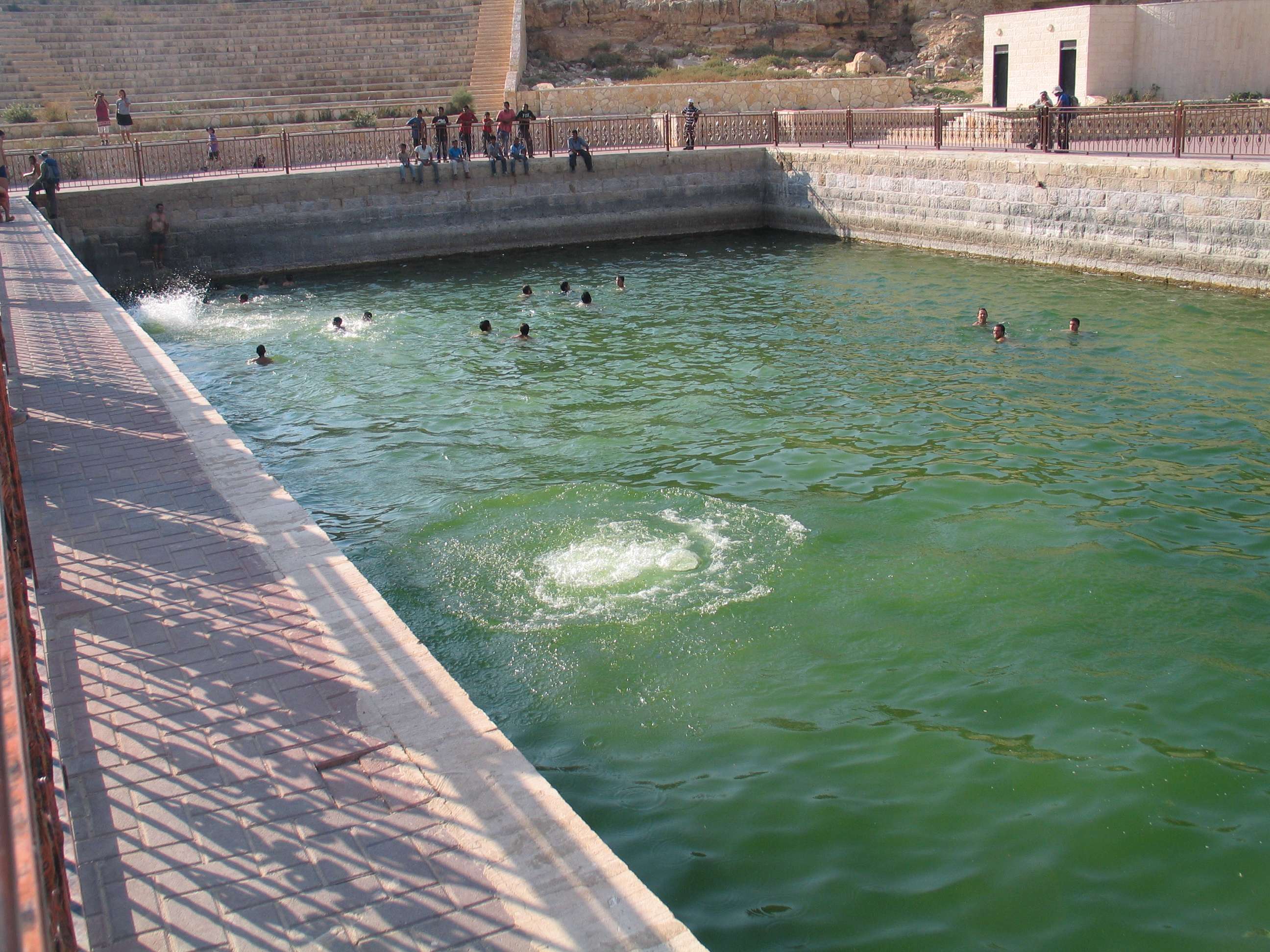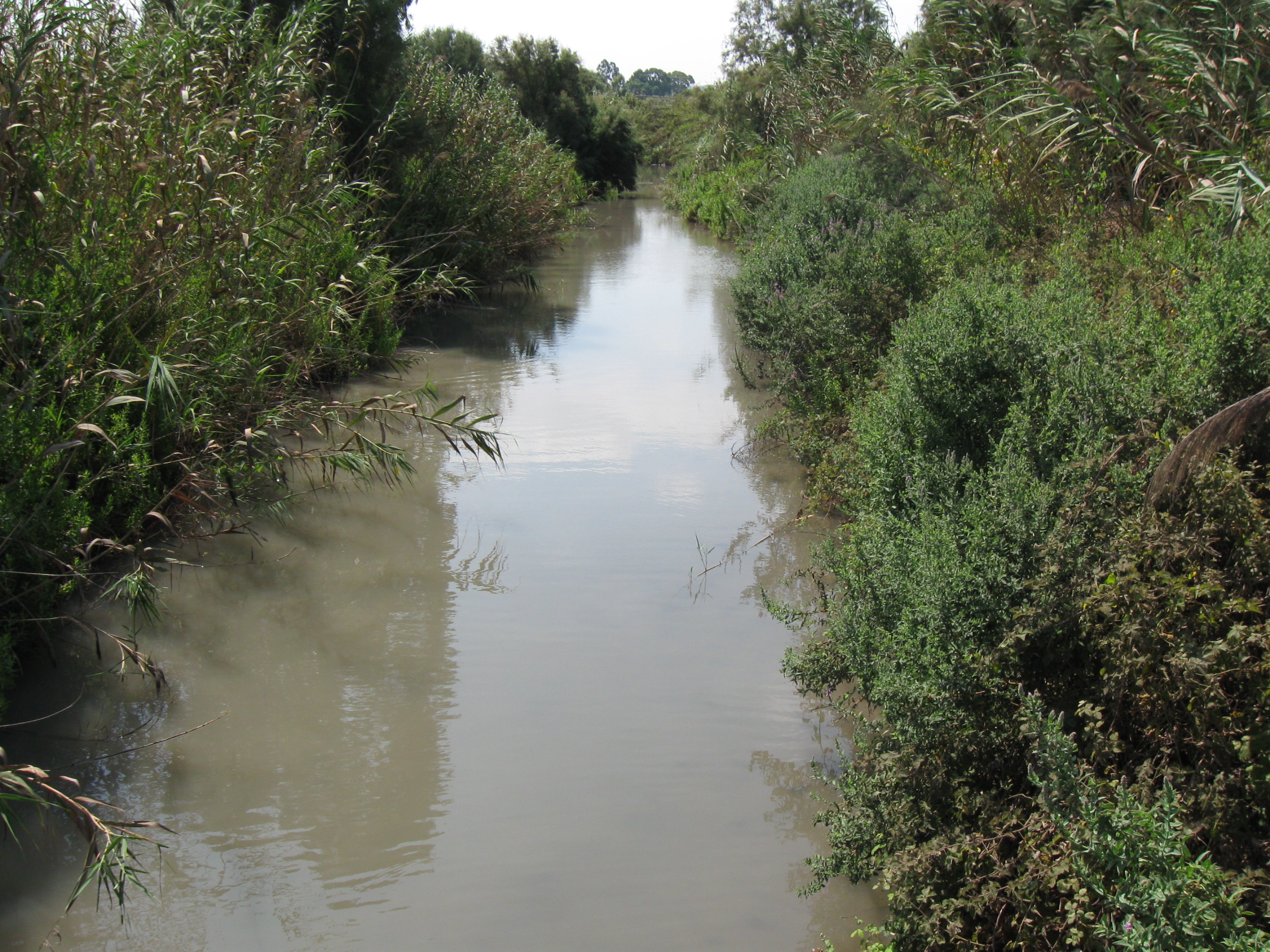|
Porphyreon
Porphyreon was a town in the late Roman province of Phoenice Prima, and a bishopric that was a suffragan of the metropolitan see of that province, Tyre. It corresponds to present-day Jieh, Lebanon. History Porphyreon is described in the ''Notitia Episcopatuum'' of Antioch as belonging to the sixth century, but does not appear in that of the tenth century. Le Quien mentions five of its bishops: *Thomas, 451; *Alexander, at the end of the fifth century; *Theodore, 518; *Christophorus, 536; *and Paul (contemporary of Justinian II), 565-78. There were two Porphyreons in this province. One, described by Scylax north of Sidon and also by Palerin of Bordeaux eight miles from Sidon, is now Jieh. A second Porphyreon, according to the Pseudo-Antoninus, may be located six or seven miles north of Carmel. Historians of the Crusades (William of Tyre and James of Vitry) confound this town with Caipha; the latter corresponds to the see. In fact Saint Simeon Stylite the Young, contempora ... [...More Info...] [...Related Items...] OR: [Wikipedia] [Google] [Baidu] |
Jieh
Jieh (or Jiyé, Jiyeh, الجية) is a seaside town in Lebanon with an estimated population of 5000, 23 km south of Beirut, in the Chouf district via a 20-minute drive along the Beirut to Sidon highway south of the capital. In Phoenician times it was known as Porphyreon and was a thriving natural seaport, which still functions today. The town is also known for its seven kilometre sandy beach, a rarity along Lebanon's mainly rocky coastline. The Hebrew prophet Jonah was said to have landed on its shores when he was spat out of the giant fish described in the Old Testament, and a temple was built which stands until today. Many invaders passed through Porphyreon such as Tohomtmos the Egyptian who landed his soldiers on its natural seaport in order to fight the North. Alexander the Great relaxed on its shore preparing for the attack on Tyre. St Peter and St Paul also walked through Jieh several times. In modern times Jieh took some of the harshest blows of the Lebanese Civil War ... [...More Info...] [...Related Items...] OR: [Wikipedia] [Google] [Baidu] |
Samaritans
Samaritans (; ; he, שומרונים, translit=Šōmrōnīm, lit=; ar, السامريون, translit=as-Sāmiriyyūn) are an ethnoreligious group who originate from the ancient Israelites. They are native to the Levant and adhere to Samaritanism, an Abrahamic religions, Abrahamic and ethnic religion. Samaritan tradition claims the group descends from the northern Twelve Tribes of Israel, Israelite tribes who were not Assyrian captivity, deported by the Neo-Assyrian Empire after the destruction of the Kingdom of Israel (Samaria), Kingdom of Israel. They consider Samaritanism to be the true Yahwism, religion of the ancient Israelites and regard Judaism as a closely related but altered religion. Samaritans also regard Mount Gerizim (near both Nablus and biblical Shechem), and not the Temple Mount in Jerusalem, to be the holiest place on Earth. They attribute the schism between Samaritanism and Judaism to have been caused by Eli (biblical figure), Eli creating an alternate shrin ... [...More Info...] [...Related Items...] OR: [Wikipedia] [Google] [Baidu] |
Roman Province
The Roman provinces (Latin: ''provincia'', pl. ''provinciae'') were the administrative regions of Ancient Rome outside Roman Italy that were controlled by the Romans under the Roman Republic and later the Roman Empire. Each province was ruled by a Roman appointed as governor. For centuries it was the largest administrative unit of the foreign possessions of ancient Rome. With the administrative reform initiated by Diocletian, it became a third level administrative subdivision of the Roman Empire, or rather a subdivision of the imperial dioceses (in turn subdivisions of the imperial prefectures). Terminology The English word ''province'' comes from the Latin word ''provincia''. In early Republican times, the term was used as a common designation for any task or set of responsibilities assigned by the Roman Senate to an individual who held ''imperium'' (right of command), which was often a military command within a specified theatre of operations. In time, the term became t ... [...More Info...] [...Related Items...] OR: [Wikipedia] [Google] [Baidu] |
Carmel (biblical Settlement)
Carmel was an ancient Israelite town in Judea, lying about from Hebron, on the southeastern frontier of Mount Hebron.Amit (n.d.), pp. 226–228 Conder & Kitcherner (1883), p312/ref> In the Hebrew Bible There are several references to Carmel in the Bible. Carmel is mentioned as a city of Judah in the Book of Samuel and also in . It is mentioned as the place where Saul erects a monument after the expedition against the Amalekites (). Carmel is mentioned in as the place of Nabal's possessions, who was the husband of Abigail. Beside the agricultural importance of the site, Carmel had also a strategic importance because of it containing the only reliable natural spring of water in the immediate area, which waters are collected in a man-made pool. Carmel, in relation to Maon, lies directly to its north, within close proximity. Roman and Byzantine period Mentioned in Eusebius' ''Onomasticon'' as a village "10 milestones east of Hebron," the village housed a Roman garrison aft ... [...More Info...] [...Related Items...] OR: [Wikipedia] [Google] [Baidu] |
Murex Brandaris
''Bolinus brandaris'' (originally called ''Murex brandaris'' by Linnaeus and also Haustellum brandaris), and commonly known as the purple dye murex or the spiny dye-murex, is a species of medium-sized predatory sea snail, an edible marine gastropod mollusk in the family Muricidae, the murex snails or the rock snails. This species is known in the fossil record from the Pliocene (age range: from 3.6 to 2.588 million years ago). Fossil shells of this species have been found in Cyprus, Spain and Italy. It was used by the Phoenicians in ancient times to extract imperial Tyrian purple dye. Distribution and habitat This snail lives in the central and western parts of the Mediterranean Sea and has been found on isolated coral atoll beaches in the Indian Ocean and South China Sea. It was known since ancient times as a source for purple dye and also as a popular food source under various names, among which ''sconciglio'', from which comes the word '' scungilli''. This species lives on ro ... [...More Info...] [...Related Items...] OR: [Wikipedia] [Google] [Baidu] |
Nahr Namein , channel'' (نهر):
{{Disambig ...
Nahr may refer to: *Nahr (toponymy), a component of Arabic toponyms literally meaning "river" * Al-Nahr, a Palestinian village * Non-allelic homologous recombination * The Arabic term for ''river A river is a natural flowing watercourse, usually freshwater, flowing towards an ocean, sea, lake or another river. In some cases, a river flows into the ground and becomes dry at the end of its course without reaching another body of wate ... [...More Info...] [...Related Items...] OR: [Wikipedia] [Google] [Baidu] |
Belus River
Na'aman River, ( he, נחל נעמן, Nahal Na'aman; ar, نهر النعامين, Nahr Na'mein), is a stream in northwestern Israel. To the ancient writers Pliny, Tacitus and Josephus it was known as the Belus or Belos River of Phoenicia. The Na'aman River today originates from springs near Ein Afek, primarily Ein Nymphit, and flows through the Zebulun Valley from south to north, before emptying into the Bay of Haifa (formerly Bay of Acre) south of Acre (Akko) on the Mediterranean Sea. History Once known as Belus or Belos, the river is mentioned by Isidore of Seville. According to the legend, this is where glass-making was invented. Tacitus also mentions glassmaking at the Belus. Pliny the Elder ('' Natural History'', 5.19), using the name 'Pacida', mentions that the river flowed from Lake Cendevia (now below Mount Carmel) for to the sea near "Ptolemais Ace" (Acre, Israel), and that it was celebrated for its vitreous sands. The name is based on ''Baal''. Wetlands The En ... [...More Info...] [...Related Items...] OR: [Wikipedia] [Google] [Baidu] |
Procopius
Procopius of Caesarea ( grc-gre, Προκόπιος ὁ Καισαρεύς ''Prokópios ho Kaisareús''; la, Procopius Caesariensis; – after 565) was a prominent late antique Greek scholar from Caesarea Maritima. Accompanying the Roman general Belisarius in Emperor Justinian's wars, Procopius became the principal Roman historian of the 6th century, writing the ''History of the Wars'', the ''Buildings'', and the ''Secret History''. Life Apart from his own writings the main source for Procopius's life was an entry in the ''Suda'',Suda pi.2479. See under 'Procopius' oSuda On Line a Byzantine Greek encyclopaedia written sometime after 975 which discusses his early life. He was a native of Caesarea in the province of ''Palaestina Prima''. He would have received a conventional upper class education in the Greek classics and rhetoric, perhaps at the famous school at Gaza. He may have attended law school, possibly at Berytus (present-day Beirut) or Constantinople (now Istanbul), a ... [...More Info...] [...Related Items...] OR: [Wikipedia] [Google] [Baidu] |
Justinian I
Justinian I (; la, Iustinianus, ; grc-gre, Ἰουστινιανός ; 48214 November 565), also known as Justinian the Great, was the Byzantine emperor from 527 to 565. His reign is marked by the ambitious but only partly realized ''renovatio imperii'', or "restoration of the Empire". This ambition was expressed by the partial recovery of the territories of the defunct Western Roman Empire. His general, Belisarius, swiftly conquered the Vandal Kingdom in North Africa. Subsequently, Belisarius, Narses, and other generals conquered the Ostrogothic kingdom, restoring Dalmatia, Sicily, Italy, and Rome to the empire after more than half a century of rule by the Ostrogoths. The praetorian prefect Liberius reclaimed the south of the Iberian peninsula, establishing the province of Spania. These campaigns re-established Roman control over the western Mediterranean, increasing the Empire's annual revenue by over a million ''solidi''. During his reign, Justinian also subdued the ''Tz ... [...More Info...] [...Related Items...] OR: [Wikipedia] [Google] [Baidu] |
Giovanni Domenico Mansi
Gian (Giovanni) Domenico Mansi (16 February 1692 – 27 September 1769) was an Italian prelate, theologian, scholar and historian, known for his massive works on the Church councils. Biography He was born at Lucca, of a patrician family, and died archbishop of that city. At the age of sixteen he entered the Congregation of Clerics Regular of the Mother of God and made his profession in 1710. Except for some journeys made for purposes of study, his whole life, until his appointment as Archbishop of Lucca (1765), was spent in his religious home. In 1758, after a sojourn at Rome, where he had been received by Cardinal Passionei, there was question of elevating him to the Sacred College, but his collaboration in an annotated edition of the famous ''Encyclopédie'' displeased Clement XIII. It should be remarked that the notes in this edition were intended to correct the text. Three years after his elevation to the episcopate he was smitten with an attack of apoplexy which left him s ... [...More Info...] [...Related Items...] OR: [Wikipedia] [Google] [Baidu] |
Simeon Stylite The Young
Saint Simeon Stylites the Younger, also known as Simeon of the Admirable Mountain ( el, Συμεὼν ὁ νεώτερος ὁ στυλίτης, Arabic: مار سمعان العمودي الأصغر ''mār semʻān l-ʻamūdī l-asghar'') (521 – 596/597), is a saint in the Eastern Orthodox Church and Catholic Churches of Eastern and Latin Rites. Life Stylites were solitaries who, taking up their abode upon the tops of a pillar (stylos), chose to spend their days amid the restraints thus entailed and in the exercise of other forms of asceticism.Thurston, Herbert. "Stylites (Pillar Saints)." The Catholic Encyclopedia Vol. 14. New York: Robert Appleton Company, 1912. 9 December 2021 Simeon was born at |






